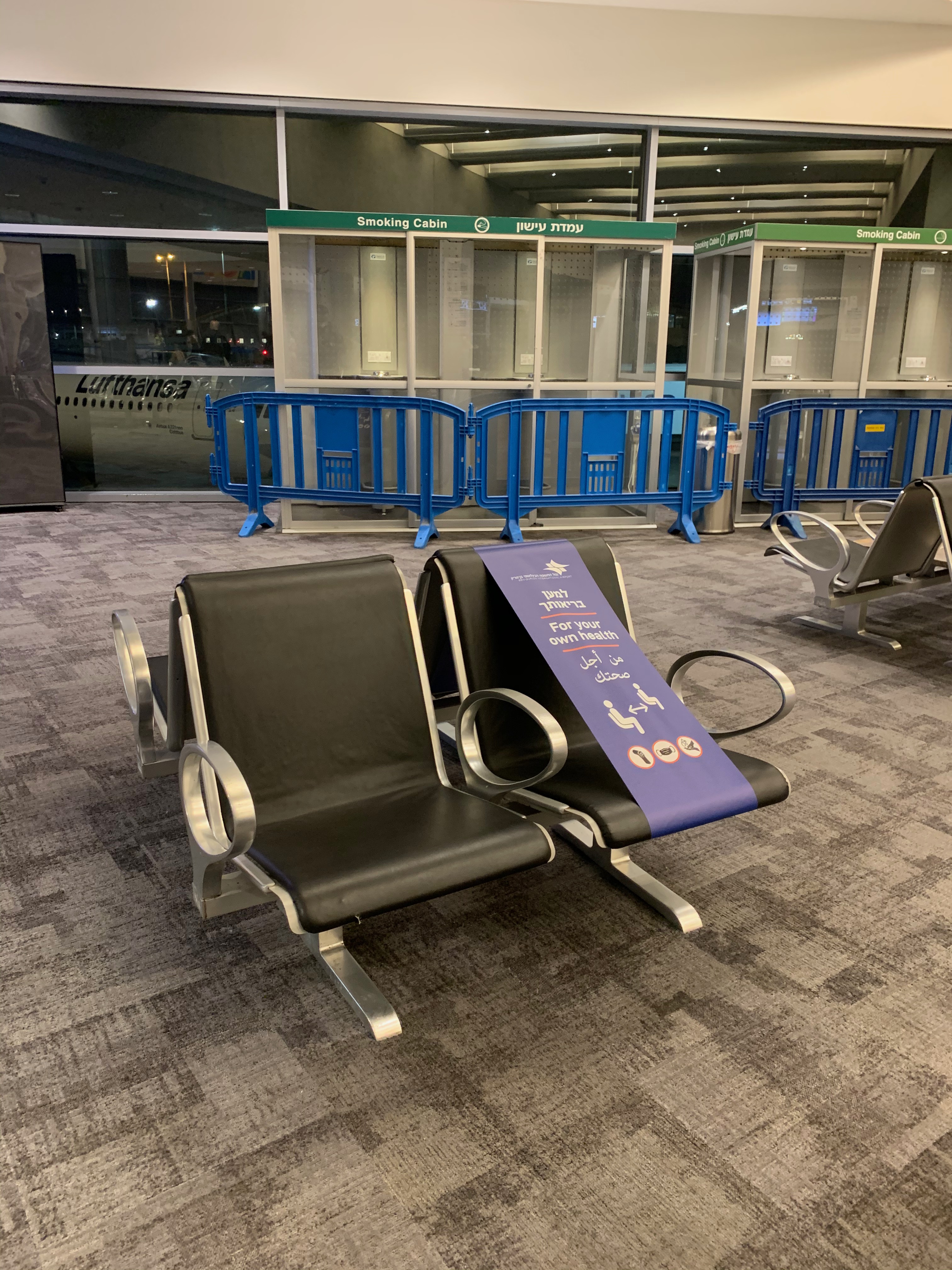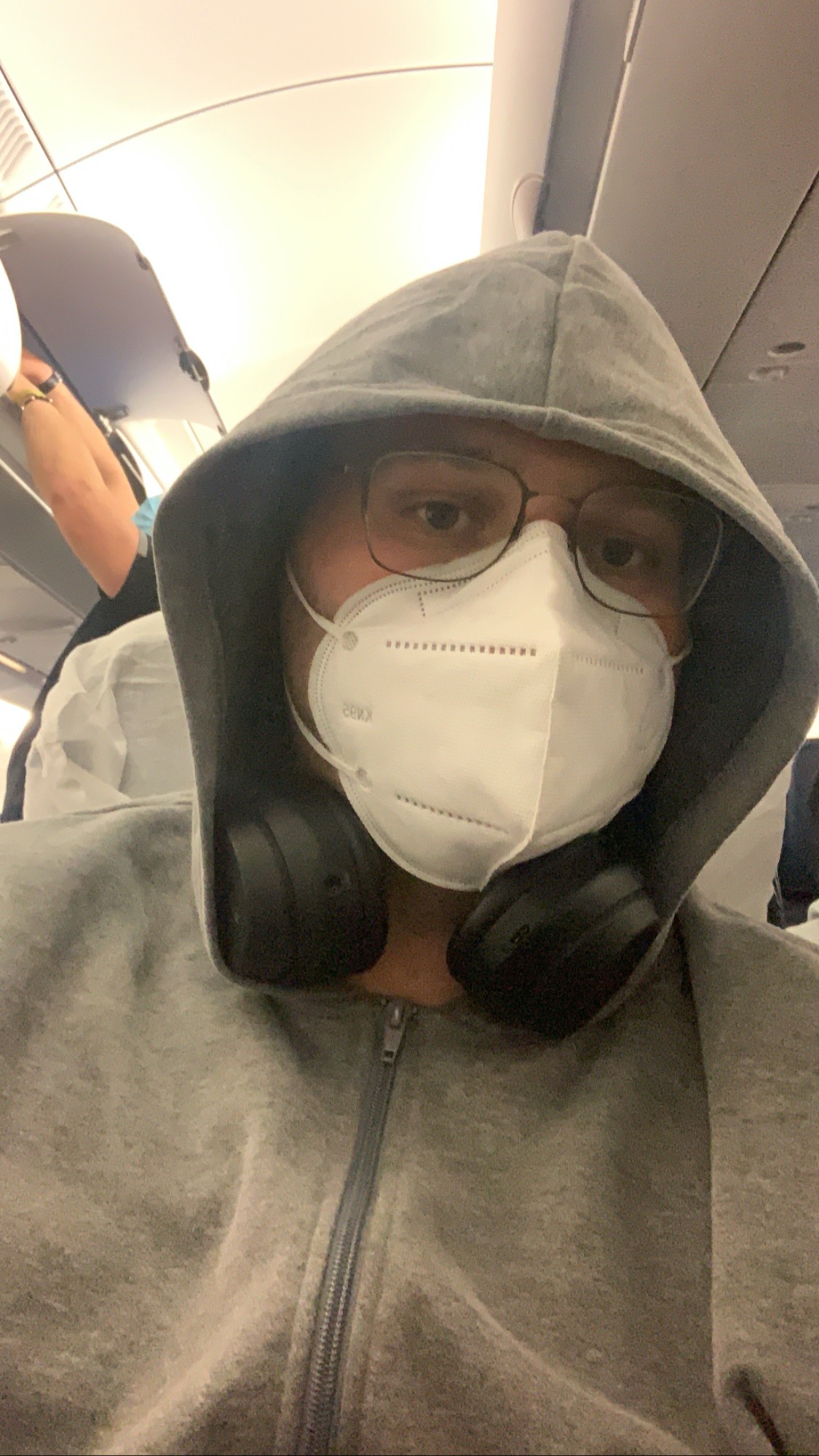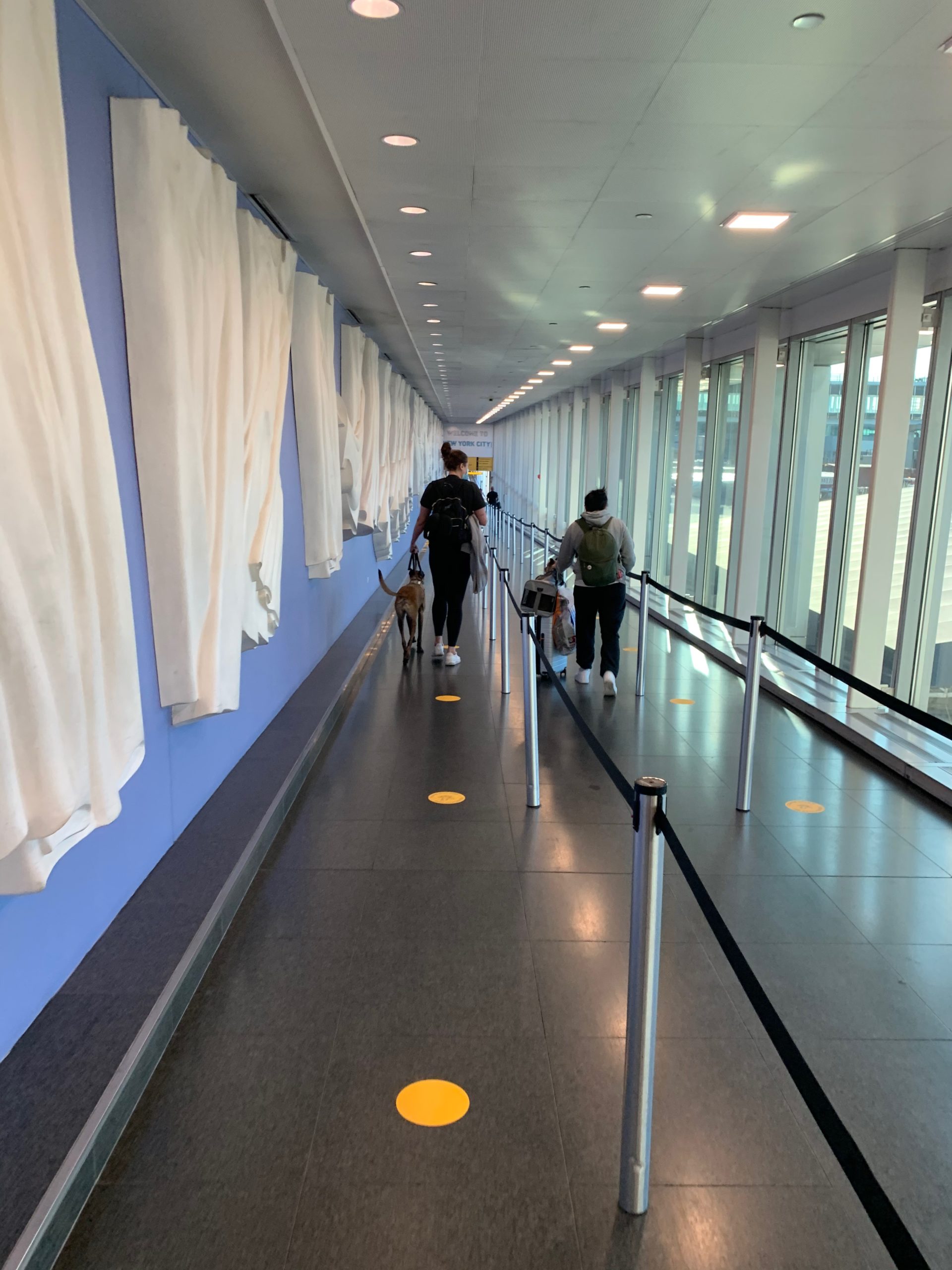A week ago, I wasn’t writing because I had to fly back to America after being stuck abroad for months because of the covid-19 pandemic. The experience was. at once tremendously surreal but also surprisingly, even concerningly, normal. At least upon arrival at JFK, that is.
You might know that I spent the last three months in Israel. I had gone to visit my sister in Tel Aviv for a week and a half at the beginning of March. A few days after I arrived, though, the world basically shut down.
Arrivals from abroad were first required to provide proof of an ability to quarantine for two weeks. Then only citizens were admitted to the country. Then the quarantine was enforced by privacy-invading cell phone tracking technology. Then travellers arriving were sent to hotels to quarantine. Then nearly all flights were cancelled. I was stuck.
Having already been in the country, I was spared two weeks of isolation, which I wasn’t going to be able to do anyway in the one and a half room apartment my sister lives in. But, with outgoing flights cancelled and our movement limited to a hundred-metre radius around the building, we were shut in for the long-haul.
Nearly two months of lockdown under our belts, things started to open up in Israel, and eventually, flights returned to the departures board at Ben Gurion International Airport. Having had a Delta ticket home booked already, I waited until the first flight that I could use it for. It left Saturday night for an arrival at JFK early Sunday morning.
Pre-Flight
Normally, I would take the train from South Tel Aviv, where my sister lives, to the airport. But train service has yet to return in the wake of the first wave of the pandemic and trains don’t run in Israel on Saturday until after sunset anyway so I needed to take a taxi. The driver told me that he hadn’t been to the airport in three months, a journey he typically makes every day. That was my first taste of how strange this experience would be.
As we turned off the highway and into the airport, I was greeted by the first security checkpoint, where, in peaceful times like these, a quick glance is usually all you get before getting waved through. This time, though, I rolled the window down to have my temperature taken (the first of three times) and I was asked if I had any other symptoms before I could proceed.
At drop-off, there was hardly anyone around. The biggest group of travellers was a collection of American embassy workers also catching the Delta flight to JFK. At the door of the terminal, we had to show our boarding passes as only ticketed travellers are allowed in the terminal, our temperatures were taken once again, and we were given red wristbands to identify us. Masked up, I finally went inside the nearly empty terminal.
From there, it was time to proceed to check-in. At Ben Gurion, this is also where you usually get grilled about the contents of your luggage and whether it was under your supervision from the time it was packed until you arrived at the airport. They tend to be antsy about that sort of thing and with good reason. This time, in addition to those questions, I was also asked my recent whereabouts and how many people I had recently interacted with. I suspect that if I mentioned a location known to the ministry of health as a transmission point, I might not have been allowed to fly.
After the grilling, dropping my bag was pretty simple. Aside from stickers on the ground to guide social distancing, plexiglass between me and the attendant, and masks on every face, it wasn’t much different than normal.
From there I proceeded through the actual security checkpoint, where ten lines were pared down to two as only my flight and two others were leaving that night. The experience there was also largely normal, but the lack of crowds made it a lot easier for me to have my film hand-checked. Gotta take those little wins when you can, right?

Once I got gate-side, it was largely normal even if I couldn’t pick up a sandwich for the plane. Sure, everyone was masked, the centre seats in the waiting area were taped over and the smoking booths closed, but that’s about it.
Flying
The flight itself was about half full. Masked flight attendants made sure that groups of passengers had some space between one another, letting groups travelling together sit immediately beside each other while individual travellers like me got some more space. I managed to snag a bulkhead seat at check-in, which kept me from having to be surrounded on all sides by fellow passengers, even with the extra space.
I tried to plan out my in-flight covid-19 safety routine before I left. While there don’t seem to be clear guidelines for how to protect yourself in aeroplane cabins, and airlines haven’t yet begun to reconfigure seating to limit transmission, I knew that I could take some precautions to shield myself from exposure. Armed with disinfecting wipes, I thoroughly wiped down my seat and the extra empty seat next to me, trying to pay attention to what surfaces I’d likely touch as well as was I figured would have seen a lot of contact before I boarded.

I stuck a pillowcase over the headrest too, for good measure, and I made sure to keep my hoodie tightly strapped around my cheeks as well. I know contact with surfaces is not a main concern of the CDC (especially compared to respiratory droplets), but I wanted to be careful.
Mask-wise, I had a handful of Ukrainian-made N95s that seem to be a popular option in Israel. While shortages in America might make cloth masks preferable, Israel has fortunately managed to bring down rates of infection to a point where PPE needs in the healthcare sector are no longer putting pressure on mask availability.

Despite doing my best to sleep through most of the twelve hours that we were airborne, I tried to change my mask every three hours or so. If you have enough of them, I really encourage swapping them out (and washing your cloth masks!) because the difference in comfort is really something, especially when. you need to have it on for half a day straight.
Aside from feeling a little claustrophobic under the mask, the flight was pretty standard. There was meal and beverage service and I spent the majority of the flight in red-eye bleariness. Upon arrival though, things got complicated.
Post-Flight
Aside from the obvious culture shock of returning to America amid a pandemic and social unrest (the day I arrived in Israel, President Trump had said that things were all going to “work out” and things were still relatively normal at home), what struck me about my arrival at John F. Kennedy International airport was how normal the experience was.
After strolling off the plane and into the terminal. the only real difference from a pre-covid-19 arrival was signage telling you to keep distance from others. The line at passport control was thankfully short as my flight was the only arrival at the time, but the lack of masks on the customs agents concerned me as I was waved through to baggage claim.

After collecting my bag and walking out to my ride home, it struck me that I was given zero advice on how to protect others from the possibility of infection after coming into the country. While Israel has already designed a quarantine regimen that appears to have limited spread (most new cases in the country these days have come from reopened schools while nearly 70% of the cases during the height of the outbreak could be traced back to arrivals from America), and places like Hong Kong are starting to test upon arrival before mandatory quarantine as well. But at JFK? Nothing. I, along with my fellow passengers, grabbed our bags and walked right out into New York City.
In late May, New York Governor Andrew Cuomo described one of the reasons that mass screening is yet to be implemented in New York airports and it comes down to what basically amounts to a labour dispute. The governor claims that the Department of Homeland Security is the only agency with a mandate to screen passengers, but the federal government hasn’t acted yet.
Now, I did come from a country with a far lower rate of infection than the United States. In fact, Israel and Greece are planning to allow for international tourism to open up tomorrow thanks to lower infection rates. But once I stepped off the air-bridge and into the terminal, does that really matter? I could have interacted with passengers arriving from any number of countries where the pandemic is far more severe, exposing myself and my family without proper guidance on how to safely keep distance and prevent transmission.
Since I arrived last week, I’ve been quarantining with my parents and keeping away from them as best I can. I tested negative for covid-19 on Thursday, five days after I landed, but I’m still being careful. Despite that outcome, I still feel like the experience was riskier than it needed to be.
There’s a lot of uncertainty we have to encounter when we’re travelling right now. Without clear guidance on how to protect ourselves on planes and in spaces like airports that were not designed with social distance in mind, we’re basically on our own, putting together whatever makes us feel safe even if it might not be scientifically meaningful.
Right now people are just avoiding travel but that won’t last forever. We need to do better to keep travellers safe and to prevent travellers from remaining an important vector for the disease. While I seem to have made it out alright, that won’t be the case for many others. Until we start taking the risk of transmission in air travel seriously, at least.
